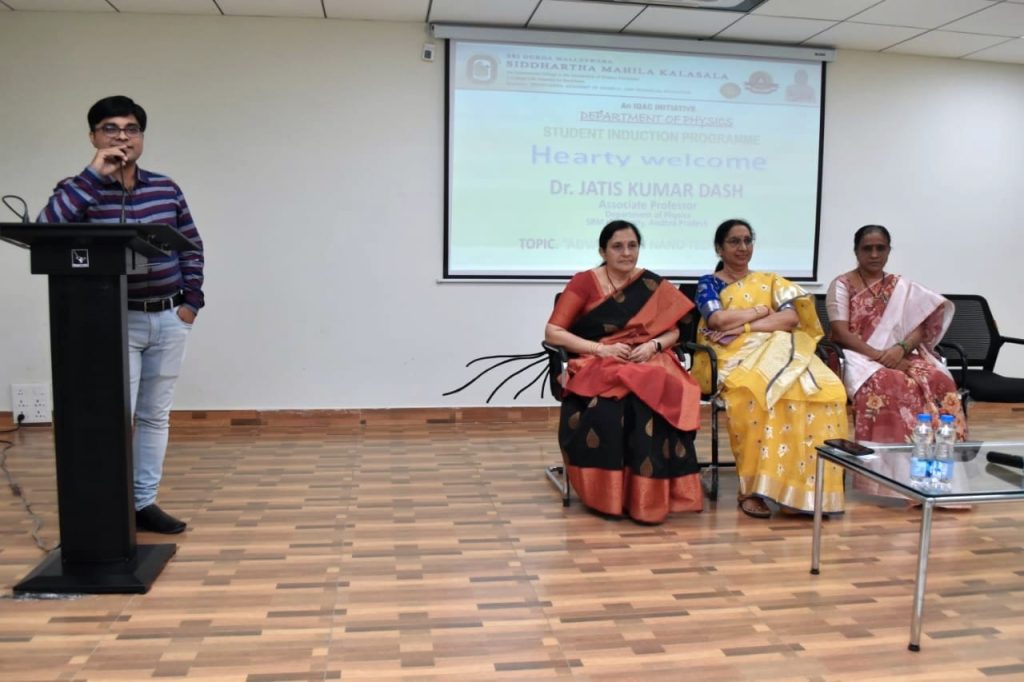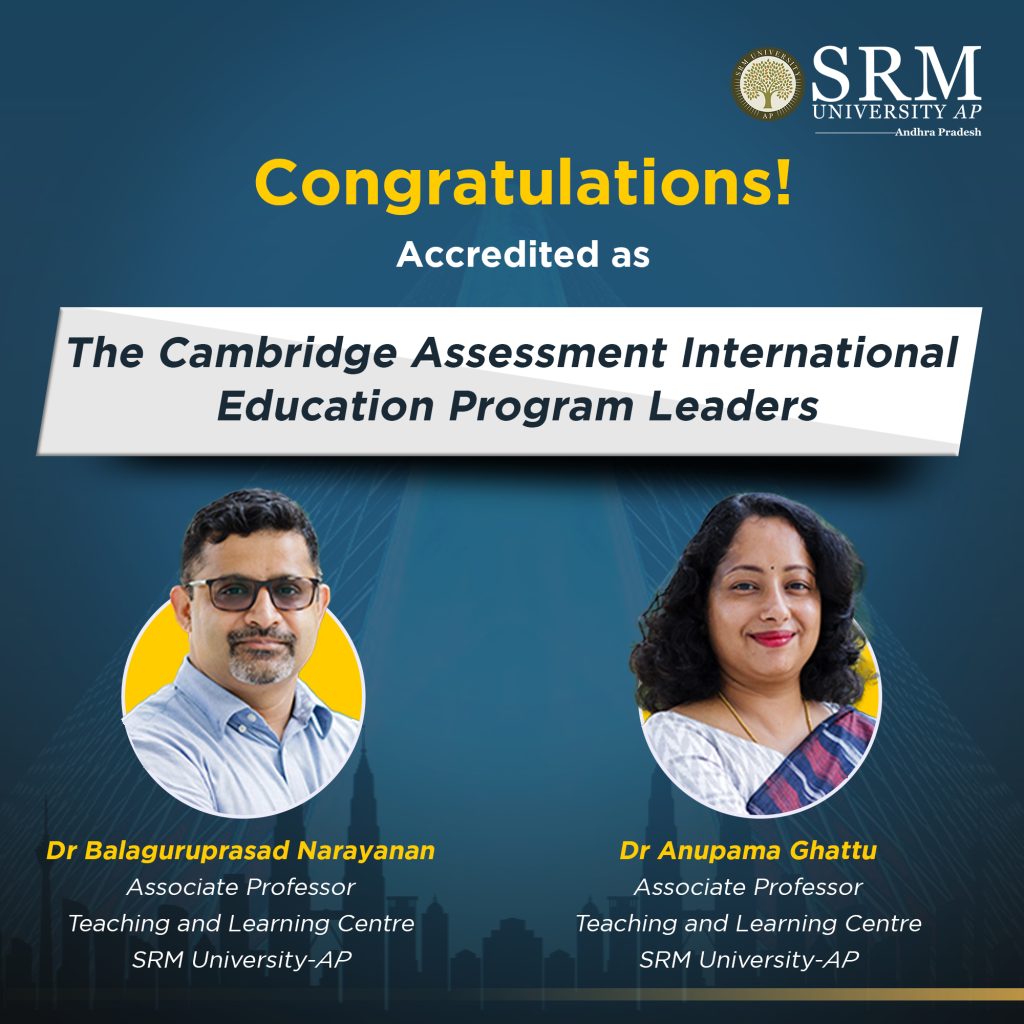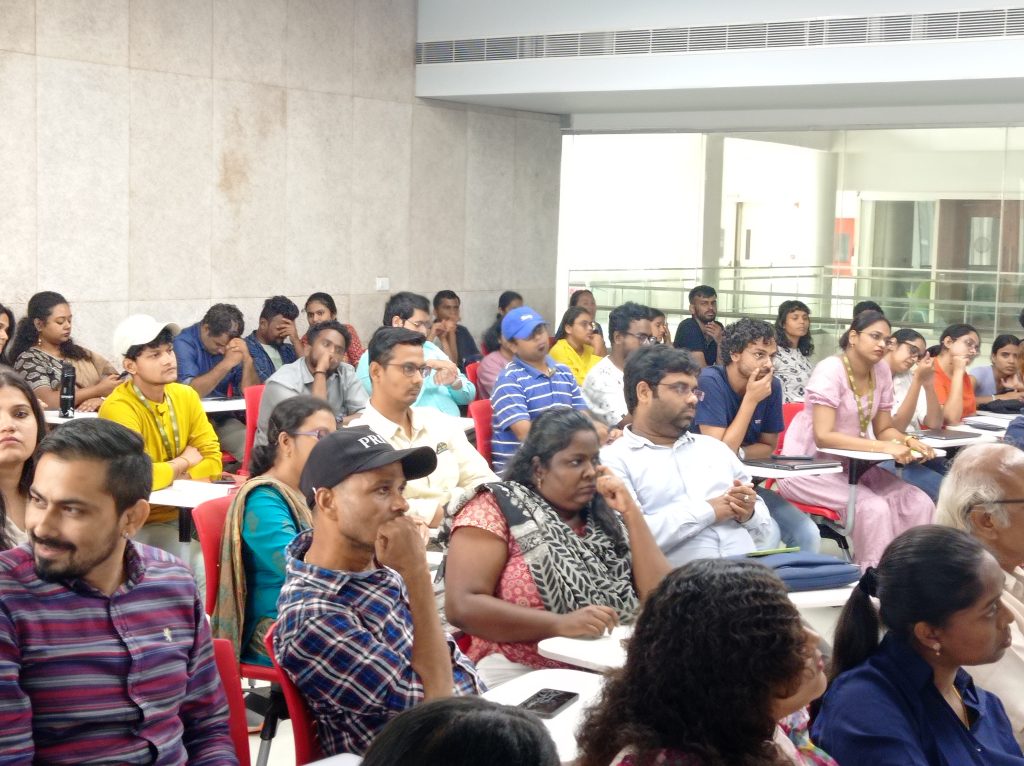Best Paper Award: Accorded to Dr Supen Kumar at MRAE 2023

The Department of Mechanical Engineering is delighted to share that Dr Supen Kumar Sah, Assistant Professor, Department of Mechanical Engineering, has received the best paper award for his paper titled “Free Vibration Analysis of Functionally Graded Material Sandwich Plate Using Refined Shear Deformation Theory” in the 2nd International Conference on Modern Research in Aerospace Engineering (MRAE 2023). Dr Supen collaborated with Saloni Malviya of VIT, Bhopal, for the research paper. The paper explores the intricate dynamics of functionally graded material sandwich plates, employing a refined deformation theory. Dr Sah’s exceptional work has not only contributed to the scientific community but has also demonstrated his dedication and passion for advancing knowledge in the field of materials science and engineering.
Abstract
In the present study, free vibration analysis of a functionally graded material sandwich plate has been carried out using refined shear deformation theory. The shear correction factor is not needed since the parabolic variation of shear strain through the thickness is in such a way that shear stresses vanish on the plate surfaces. Hamilton’s principle is used for the derivation of the equation of motion for the theory. Additionally, Navier’s solution is used to obtain the eigenvalue equation for the sandwich plate. The three variants of sandwich plate are chosen for the analysis. To carry out the free vibration analysis three different types of FGM sandwich plate models namely 1-1-1, 1-2-1, and 2-2-1 have been considered. A power law defines the volume fraction index and the material properties of the individual layers of the sandwich plate. Lastly, the impact of parameters such as volume fraction, aspect ratio, and length-to-width ratio on frequency parameters is investigated.
Future Research Plans
• Modelling and Analysis of porous uni and multi-directional Functionally Graded Material (FGM) plates to obtain the impact of porosity distributions over structural responses.
• Analytical and finite Element Solutions for static and dynamic response of FGM sandwich plates employing non-polynomial shear deformation theories under elastic foundation.


- Published in Departmental News, Faculty Achievements, Mechanical Engineering NEWS, News, Research News
Inspiring the Next Generation: A Guest Lecture on Advances in Nanotechnology

Dr Jatis Kumar Dash, Associate Professor in Physics at SRM University-AP, delivered an invited lecture on Advances in Nanotechnology at Sri Durga Malleswara Siddhartha Mahila Kalasala, Vijayawada on September 30, 2023.
During the lecture, the students were actively engaged and asked insightful questions that demonstrated their keen interest in how nanotechnology can address global challenges in fields like energy and security. By the end of the lecture, many students expressed their interest in pursuing research careers and visiting the varsity to conduct short internship programmes under the guidance of the faculty members in the Department of Physics and explore the advanced laboratories. Dr Jatis was happy to have sparked the students’ interest in nanomaterials and devices.
SRM University-AP is committed to providing students with opportunities to learn about cutting-edge technologies and develop the skills they need to succeed in their careers. The guest lecture on Advances in Nanotechnology is just one example of how the university is working to prepare students for the future. In the spirit of innovation and nurturing the dreams of these young minds the varsity extended an open invitation to the students of Sri Durga Malleswara Siddhartha Mahila Kalasala to explore our state-of-the-art laboratories and engage in research opportunities. The students can experience the frontiers of science and directly take part in the current ongoing research works.
- Published in Departmental News, News, Physics News
Dr Gaurav Arora on the Power of Entrepreneurship

Paari School of Business is committed to nurturing the entrepreneurial spirit among its students. The school had invited Dr Gaurav Arora, Global Entrepreneur at Enhance (Luxury Hospitality and Tourism Representation), to deliver an inspiring lecture on October 11, 2023. The lecture titled “Entrepreneurship: Nurturing Innovation, Profitability, and Business Growth” encapsulated key insights for budding entrepreneurs.
Dr Arora dispelled the notion that entrepreneurship is an exclusive venture, asserting that anyone can dare to dream and embark on this journey. He highlighted the importance of enthusiasm, initiative, and teamwork in entrepreneurial success. The lecture showcased the power of keywords such as passion, motivation, and reliability, which serve as the foundation for a successful entrepreneurial career.
He shared valuable experiences in navigating challenges, including the digital transformation his company undertook during the COVID-19 pandemic. Dr Arora emphasised self-reliance and the significance of taking initiative to achieve one’s goals. The lecture concluded with a simple yet effective approach to success: Dream, Plan, and Execute. Dr Arora also shared an inspiring success story, “Zerodha” India’s leading stockbroker.
The lecture provided a wealth of insights, encouraging students to embrace creativity, take calculated risks, and maintain a clear vision for their entrepreneurial endeavours.
- Published in Departmental News, News, Paari Current Happenings
Kanchan Khera Deliberates on the Secrets to Successful Entrepreneurship

Ms Kanchan Khera, the CEO and founder of Zykrr, a cutting-edge technology company that is transforming experience management, discussed the role of entrepreneurship in the contemporary business environment and revealed the secrets of becoming a successful entrepreneur. The Paari School of Business organised a guest talk by Ms Kanchan Khera on September 26, 2023, to enlighten the students on the path to successful entrepreneurship.
- Published in Departmental News, News, Paari Current Happenings
The Significance and Impact of AI-powered Marketing

With the advent of AI, the business sector gradually transitions to tech-dominated management and marketing practices for increased impact. On this note, the Paari School of Business organised a guest lecture on “AI and Generative AI-Powered Marketing” on September 26, 2023, by Mr Laxminarayanan G, Senior Vice President and Global Delivery Head of Polestar Solutions. Mr Laxminarayanan emphasised that AI is the latest trend in the world, and companies such as Amazon, Google, Uber, and Swiggy/Zomato are using it effectively to improve the customer experience by exploring the significance and impact of AI-powered marketing on the business management.
- Published in Departmental News, News, Paari Current Happenings
IIT Bombay Professor Delivers Distinguished Lecture at SRM University-AP

“If we start working today towards developing LTA systems, in 10 years India will lead the sustainable air transportation” esteemed academician, Prof. Rajkumar S Pant, Professor of Aerospace Engineering stated in his lecture at SRM University-AP. The seasoned expert from the prestigious institute of IIT Bombay delivered a lecture on “The Design and Development of Lighter Than Air Systems” at SRM university-AP on October 16, 2023, as part of the Distinguished Lecture Series 2023 organised by the Department of Mechanical Engineering. The lecture extensively discussed the latest developments in the area of conceptual design, sizing, design, development and flight/field testing of LTA Systems.
In his lecture, Prof. Pant encouraged students to explore the dynamics of Lighter Than Air Systems, beginning with aerostats and then gradually proceeding to more complex airships. The session highlighted the disaster of Hindenburg, breaking the myth that airship transportation is dangerous and unreliable. Prof. Pant engaged the session with video presentations on the building, developing and working of airships and aerostats that have been conducted at the Lighter-Than-Air Systems Laboratory of IIT Bombay. His lecture also showcased some of the research and development activities that have been carried out in the LTA Systems Laboratory of IIT Bombay including Project HERCARA, and other projects carried out in collaboration with ISRO and DRDO.

The distinguished lecture was followed by a workshop on “Sizing of Reusable Indoor Hot Air Balloon (RIHAB)”. The workshop provided the students with practical knowledge and hands-on experience on LTE systems and vehicles inducing research interest in the domain of aerospace engineering and sustainable air transportation. Prof. Ranjit Thapa, Dean – Research, Prof. Prakash Jadhav, Head – Department of Mechanical Engineering, faculty and students at the university actively participated in the lecture and the workshop.
- Published in Departmental News, Mechanical Engineering NEWS, News
Discourse on Buddhism provides Valuable Insights

Dr Shrikant Ganvir, Assistant Professor in Ancient Indian History, Culture, and Archaeology from Deccan College Post Graduate Research Institute, Pune, delivered an invigorating session organised by the Department of History at SRM University-AP on October 11, 2023. Dr Ganvir’s session dealt with Buddhist studies, particularly of the Andhra region, and he has extensively worked on sites like Phanigiri, Salihundam, Amaravati, Guntapalli, and likewise.
Dr. Ganvir specialises in Buddhist art, architecture, and iconography. His area of expertise includes the religious history of Deccan, the history of Buddhism in South Asia, the rock-cut architecture of the Deccan, the religious imagery of ancient India, and the archaeology of religions. His broad knowledge in these fields allowed him to share enlightening insights with his audience.
- Published in Departmental News, History Current Happenings, History News, News
Unlocking Opportunities: A Glance at Education Expo 2023

The Directorate of International Relations & Higher Studies (IR&HS) hosted the Education Fair on Wednesday, October 11, 2023, to provide meticulous guidance on higher education in universities and programmes across the globe. The event featured major universities from USA and UK, including the University of Missouri St Louis, USA, University of Greenwich, UK; Coventry University, UK; California State University, USA; York University, Canada and many more.
The event provided students with a compass for their educational journey. Expert advisors and counsellors offered insights into courses for higher studies, and scholarships, and guided them toward the right choices for their future. From business and engineering to arts and sciences, the expo showcased the diversity of worldwide educational opportunities.
The SRM University-AP’s education fair was a source of inspiration for students, motivating them to dream big and aim high. The education expo was more than just an event; it promised a brighter future, a world of opportunities, and a global perspective on education.

- Published in Departmental News, International Relations, IR-News, News
SRM University-AP Shines at FUSIONX-2023
The second-year BTech team of SRM University-AP achieved remarkable success at the prestigious National Level Technical Competition FUSIONX-2023. The two-day event was held at S R Gudlavelluru Engineering College (SRGEC), where our team’s exceptional skills and knowledge earned them well-deserved laurels. It is a testament to our students and faculty’s hard work and dedication!
Three of our students, Mr Sri Sai Manikanta, Mr Ashwanth, and Mr Ajit Kumar, were victorious in the Drone Extreme Challenge and received a cash prize of Rs. 2500. This technical event was held on September 14 and 15, 2023, and was organised by the Department of the Internet of Things (IoT) at SRGEC in collaboration with the Drone Club, ISF and ADYUGA EdTech Solutions.
Hearty congratulations to the champions on this noteworthy accomplishment!
- Published in Departmental News, ECE NEWS, News, Students Achievements
SRM AP Educators Accredited with Cambridge Certification

SRM University-AP educators, Dr Balaguruprasad Narayanan and Dr Anupama Ghattu from the Teaching and Learning Centre are now accredited facilitators under The Cambridge Assessment International Education Program Leaders. The Duo have earned their specialisations in the Teaching and Learning Program & Teaching with Digital Technologies Program respectively.
The certification will enable the educators to provide the faculty and students with specialised competency in teaching and learning mechanisms, it will also facilitate student learning experiences. Following this accreditation, the programme leaders through TLC are planning to guide SRM University-AP faculty members for International Cambridge Certification in one of the above-mentioned programmes of their choice.
Congratulations to Dr Ghattu and Dr Narayanan!
- Published in Departmental News, Faculty Achievements, News, TLC














